Last updated on April 9th, 2024
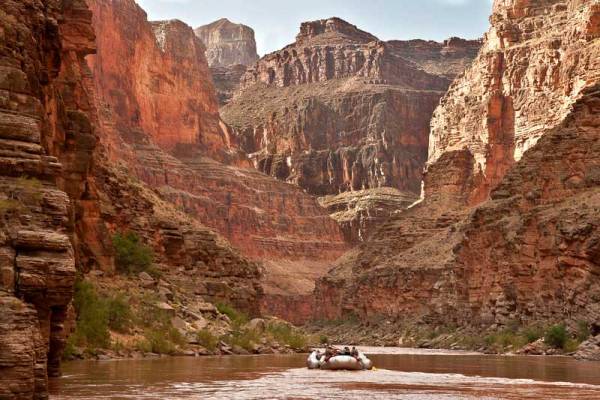
Colorado River Rafting
Colorado River Rafting – Outfitter
Choosing your Colorado River Rafting Outfitter is an important choice. The trip down the Colorado River is a one way adventure, so planning your entry and exit are important. The length of a Colorado River Rafting journey varies depending on how far down river you want to go, whether you use engines on your raft and whether you visit side canyons. There are many tour outfitters to choose from. Check out the Grand Canyon River Outfitters Association for a list tour operators.
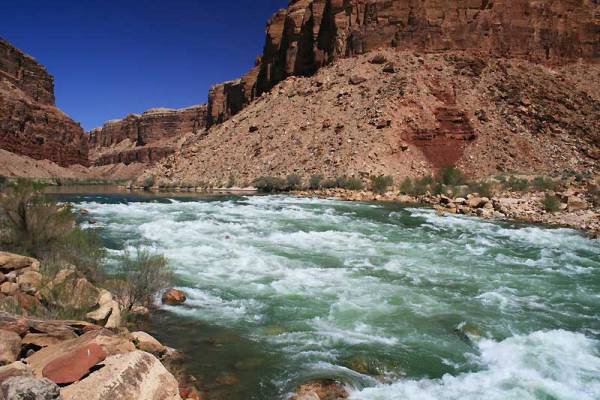
Badger Creek Rapid, © Can Stock / Pancaketom
Colorado River Rafting – Three Sections
Upper Grand Canyon from Lees Ferry to Phantom Ranch. Most people cover this first section, which doesn’t have whitewater.
Lower Grand Canyon from Phantom Ranch to Whitmore Wash. The second section of Colorado River Rafting has all the famous whitewater rapids. To get here you either have to float down the Upper Grand Canyon or you have to spend a day hiking in to the Phantom Ranch from Grand Canyon Village.
Whitmore Wash to Diamond Creek or Lake Mead. The third section is very tame and less traveled. You either have to float the Lower Grand Canyon to reach this section or you have to helicopter in from the Bar 10 Ranch to start your Colorado River Rafting experience in the third section.

Red Wall Cavern, © Can Stock / Pancaketom
Colorado River Rafting – Lees Ferry
You start the Upper Grand Canyon section of Colorado River Rafting at Lees Ferry and finish this first section at the Phantom Ranch. Lees Ferry is an easy launching spot and it’s officially Mile 0 of river rafting. Most good outfitters will shuttle you from Flagstaff to Lees Ferry and take you back to Flagstaff after your river rafting run. In Lees Ferry, stay at the Marble Canyon Lodge, Lees Ferry Lodge or the National Park Service – Lees Ferry Campground.
There are abandoned buildings at Lees Ferry from the settlement that was established in the late 1800s, when this was the only place to cross the Colorado River for 700 miles.
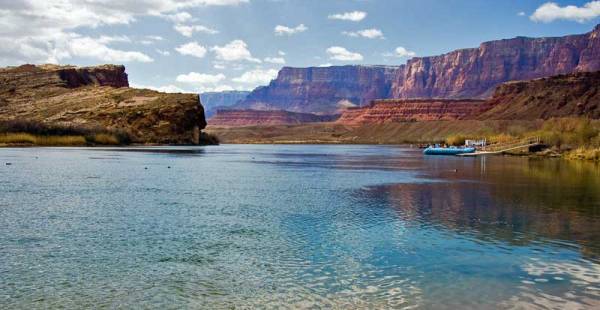
Lees Ferry, © Can Stock / sprokop
Rafting Upper Grand Canyon
From Lees Ferry, the Upper Grand Canyon river rafting section takes about 4 – 6 days and cover 87 miles. Your Colorado River Rafting voyage through the Upper Grand Canyon soon takes you down Marble Canyon and under the Navajo Bridge. Then you pass Nankoweap where you can walk up to the ruins of Anasazi granaries. Another famous stop on the Upper Grand Canyon is the gigantic Red Wall Cavern.

Black Bridge, Kaibab Trail, © Can Stock / Pancaketom
At Phantom Ranch you will find two foot bridges over the Colorado River. First is the Black Bridge on the Kaibab Trail and then the Silver Bridge on Bright Angel Trail. Some rafters finish their adventure here, while others continue to the exciting rapids of the Lower Grand Canyon.
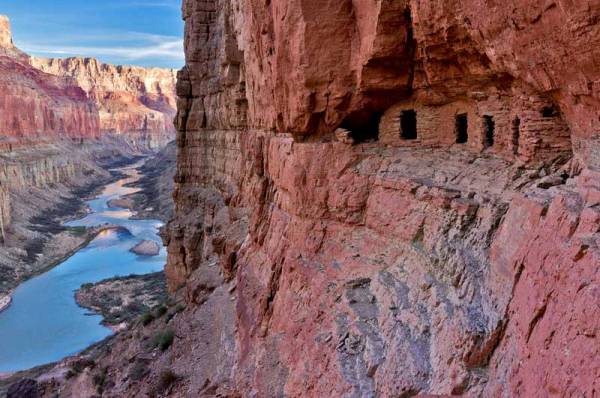
Nankoweap Granary, © Can Stock / PBodig
River Rafting – Phantom Ranch
Phantom Ranch is on the north side of the river. Some Upper Canyon rafters hike a full day up and out of the canyon here to Grand Canyon Village. Be prepared for heat, steep grades and heights on the trail. Others hike down here to start their Lower Canyon Colorado River Rafting adventure. Reservations for the Phantom Ranch can be made through Xanterra as they manage National Park accommodation.
Rafting Lower Grand Canyon
The Lower Grand Canyon Colorado River rafting section takes about 6 – 8 days and covers about 100 miles. The Lower Grand Canyon has the heaviest white water in the canyon, including Lava Falls, Crystal Falls, Hermit Falls and Granite Falls. These are Class IV – V rapids. You can also see Deer Creek Falls and the turquoise waters of Havasu Creek. Havasu Falls is a half day hike from the Colorado River, so it is unlikely that your outfitter will allow enough time to visit Havasu Falls.
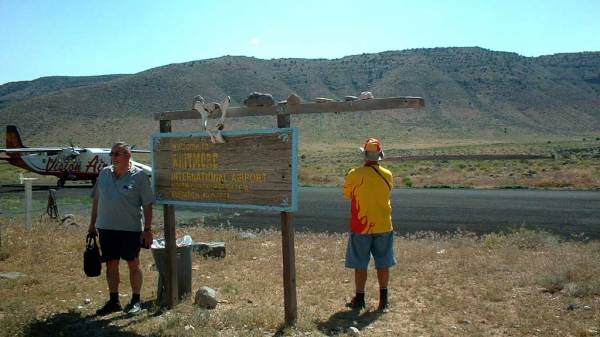
Whitmore Airport, Whitmore Wash Pullout
Whitmore Wash
The last stop on the Lower Grand Canyon is Whitmore Wash, where many Colorado River rafters exit the canyon by helicopter to the Bar 10 Ranch . At the Bar 10 Ranch you can shower, eat, relax and even rent a room. Then you can fly out from “Whitmore International Airport” with its small plane service to Las Vegas.
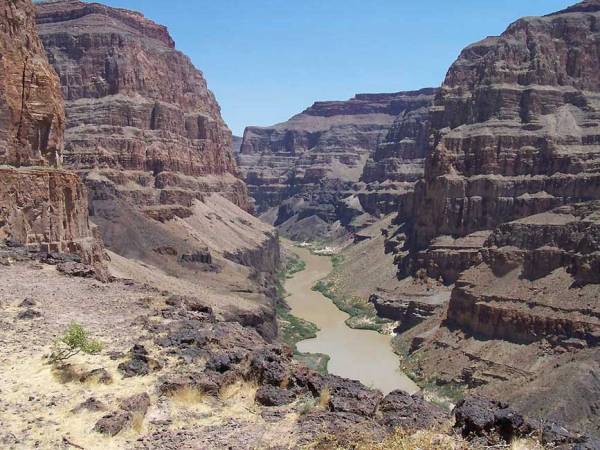
North Rim, Colorado River, Lower Grand Canyon
Diamond Creek or Lake Mead
The third section of the Colorado River takes 2 – 5 days depending on whether you finish at Diamond Creek or Lake Mead. This is a peaceful section of the Colorado River after the Grand Canyon. Visit the Travertine Grotto en route. If you exit at Diamond Creek, stay at Hualapai Lodge. Then head over to the Grand Canyon Skywalk and fly out of nearby West Rim airport. You can also continue past Diamond Creek to exit at Pearce Ferry or even jet boat across Lake Mead where the mighty Colorado has been tamed by Hoover Dam. It’s more than 90 miles from Whitmore Wash to Lake Mead.

Lower Colorado River
Colorado River Rafting Weather
Colorado River Rafting weather is extremely hot in summer in the Grand Canyon. Average highs exceed 100 F from June to September. Average lows during the summer months are in the mid 70s F. The river rafting weather temperatures contrast nicely with the 50 F water temperature of the river. Spring and fall are excellent times to float the river and enjoy more comfortable temperatures. There are also fewer people at these times.
Rainfall is light in the canyon, but thunderstorms peak in the month of August. Flash flooding in creeks and gullies can turn the Colorado River a muddy brown. Although rafting is possible year round, water levels drop in the fall and the white water disappears. Many outfitters close from October through March. Swimming in the Colorado River is prohibited in the Grand Canyon National Park due to the strong currents.

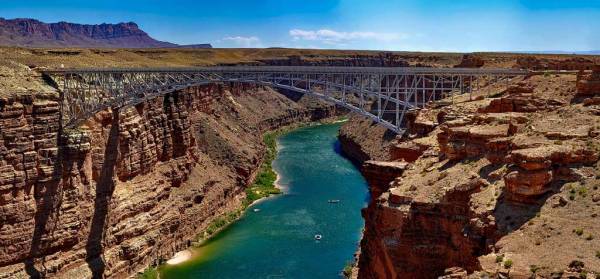
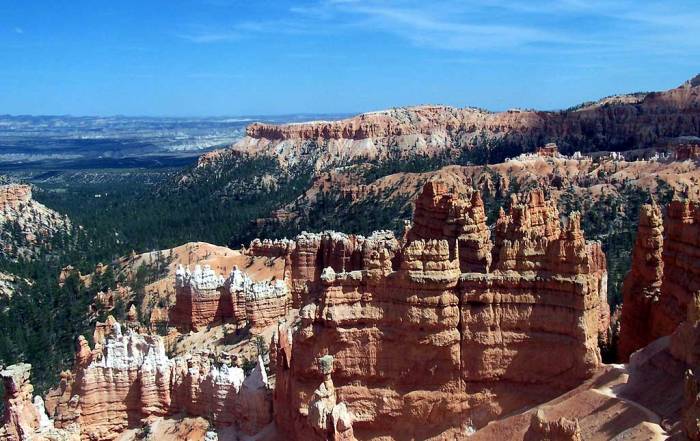
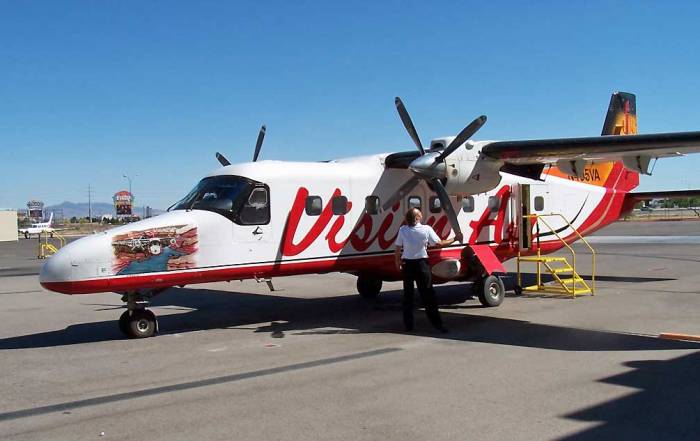
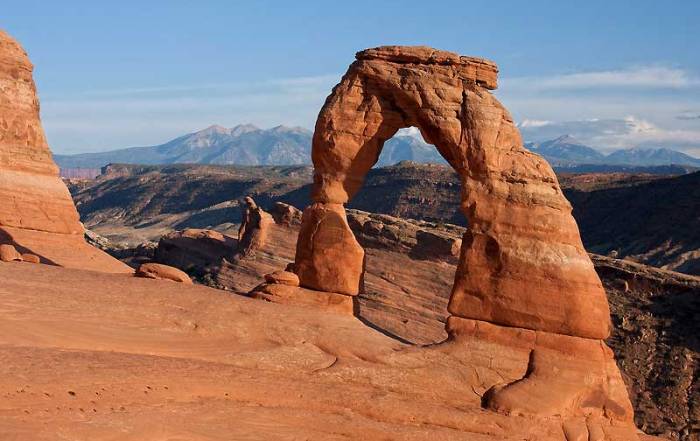
Leave A Comment